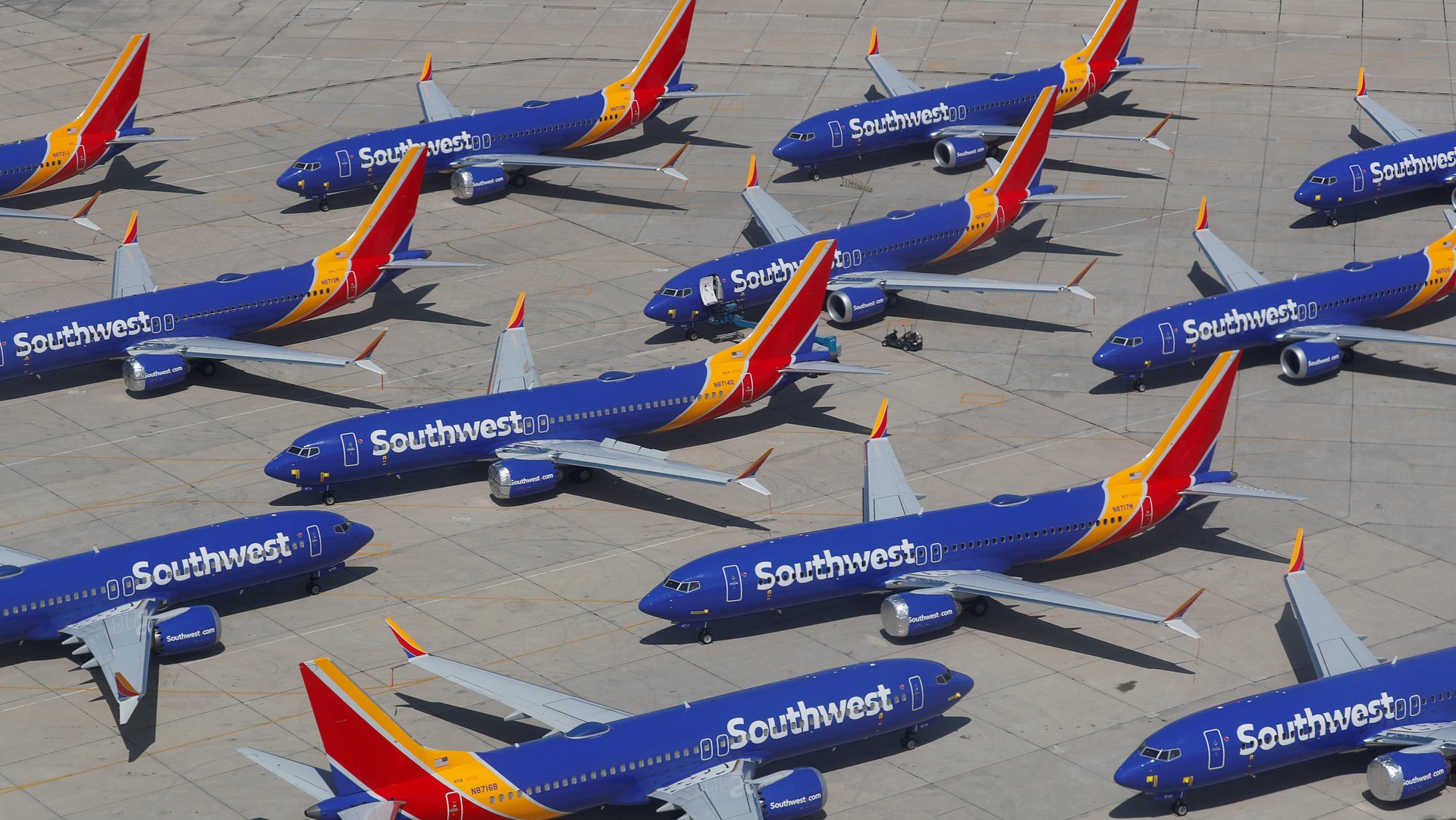The emergency fix for the grounded Boeing Max needs its own software fix
Boeing’s software fix for its troubled 737 Max plane was supposed to arrive in April, but was delayed due to the complexity of the task. And now it’s being delayed further.


Boeing’s software fix for its troubled 737 Max plane was supposed to arrive in April, but was delayed due to the complexity of the task. And now it’s being delayed further.
In its tests of Boeing’s software update to address malfunctions linked to two deadly crashes, the US Federal Aviation Administration (FAA) “identified an additional requirement that it has asked the company to address,” Boeing said late last night (June 26). Boeing said it was working on the FAA’s request.
A total of nearly 350 people were killed when a Lion Air flight using the Max crashed last October in Indonesia, and in an Ethiopian Airlines flight in March. Both crashes were linked to bad sensor data triggering an automated anti-stall system called the Maneuvering Characteristics Augmentation System, or MCAS, which points the plane sharply downward. Pilots in the first plane were unaware of the new system and the plane crashed into the sea a little over 10 minutes after takeoff. Pilots on the Ethiopian flight were aware of the system, and initiated the checklist recommended by Boeing and the FAA to override the system, but weren’t able to save it. The plane was grounded globally after that crash.
The software fix Boeing was earlier working on was supposed to prevent the anti-stall system the pilots were fighting from kicking in on data from a single sensor, recalibrate how powerfully it worked, and limit the number of times it could trigger.
Last week the Wall Street Journal reported (paywall) that tests of the software fix showed that in some cases, substantial upper body strength would be required to fully comply with the recommended emergency checklist for this situation. One of the final steps to stabilize the plane requires manually turning a wheel control, but the action of the anti-stall system could potentially make it too difficult to turn in rare cases.
That could mean more time is needed to stabilize the plane than is available—in the two crashes that have occurred malfunction occurred minutes into the flight at fairly low altitudes, when pilots have just seconds to make critical decisions and act.
Boeing said the new software fix it’s working on “will reduce pilot workload.” If the software doesn’t address the issue, it might have to change computer chips in all the 737 Max planes it’s delivered, according to the Wall Street Journal (paywall).
In a statement yesterday, the FAA said it would “lift the aircraft’s prohibition order when we deem it is safe to do so… On the most recent issue, the FAA’s process is designed to discover and highlight potential risks. The FAA recently found a potential risk that Boeing must mitigate.”